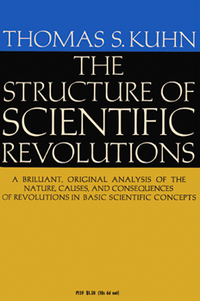#TheStructureOfScientificRevolutions
The Structure of Scientific Revolutions
The Structure of Scientific Revolutions (1962; second edition 1970; abbreviated SSR) is a book about the history of science by philosopher Thomas S. Kuhn. Its publication was a landmark event in the history, philosophy, and sociology of scientific
Read More..
by Thomas S. Kuhn
Ratings
Likes
Reviews
Popularity
Ranks
This #hashtag is not ranked yet.






